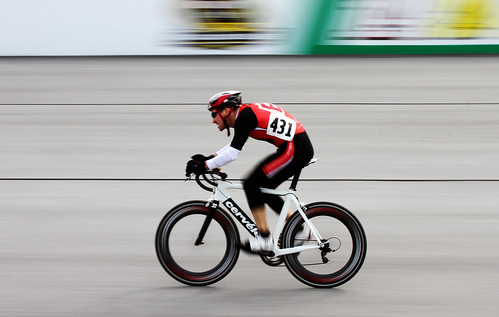 |
| Bike Commuting at its finest |
In this case, there are a few simple rules:
Don't buy new
New bikes are great but they often are poorer in value. For the same $150, you could get a cheap 15kg high-tensile steel market bike from your LBS, or you can get a Alivio-quality MTB from 13kg GT/Trek/Giant. The latter is without doubt better to ride, as it has better thought out geometry, better quality components (i.e. index shifters), and often a few other conveniences such as quick-release wheels.
So long as during your test ride, you find the bike not to have any major faults - a cracked frame, frayed wires, bald tyres or anything that requires extensive repair, the bike is good to go as a commuting bike.
Head over to the Togoparts.com Marketplace and you'll find a few $150 used MTBs that would be perfect for your purpose. Of course, if all you do have a safe place at work to keep the bike, you probably can spend a lot more.
Ensure you budget for a quality lock
Prepare to spend at least 20% of your bikes' value on locks. It would be best to buy a pair of locks - one U lock, the other a cable lock. This allows you to lock both your front and rear wheels, and the fact that these two locks have different strengths against different tools add to the theft resistance. A cable lock, for example, is better resistant to bolt cutters.
Understand your riding style
There are a few considerations when you choose what type of bike you want to buy. Every bike has different faculties and abilities. And you need to consider your priorities:
Safety
All bikes are not equally safe. Road bikes are fast but they might have more trouble stopping than a fat slicked city bike with disc brakes. The crouched position on a road bike also makes your field of vision more limited than an upright bike. And then the crouched geometry makes it harder to look behind. And harder to signal.
 |
| Yes, a Cervelo will get you places in record time, but is this the best bike for commuting? Photo: Dome Poon |
Comfort or Speed?
Comfort and speed is a hard one. A very comfortable bike often has a significant weight penalty and speed penalty, and vice-versa. The best way to imagine this is to look at a road bike and then look at a comfort bike.
Then there's the issue of materials: aluminium vs titanium vs carbon fibre vs steel. Personally, I like steel. Steel does not transfer all sorts of nasty vibration to you unlike aluminium. I have yet to try out titanium and carbon fibre, and I doubt bikes made of those material make any sense as commuter bikes if you're locking the bike outside.
As for tyres - logically, the fatter the wheel, the slower the bike. A 1.25" width slick tyre will definitely be faster than a 2.25" mountain bike tyre. If you want outright speed, then you'll want a slim-tyre aerodynamic road bike with hoods. However, if you don't mind sacrificing speed for additional comfort and ability to ride on different terrain, then a fat tyre would be for you. Schwalbe makes the Big Apple, which is supposedly what they call a "balloon" tyre - the name suggest it is bouncy and cushy. It is - but slow.
Ability to Hold Luggage
Full suspension mountain bikes often have problems having a truly sturdy rack. Some road bikes do not have the braze-ons for a rack to go in either. Some drop handlebars are not wide enough to fit certain types of handlebar bag. If you're a backpack kind of person, then you'll have no problem. However, once you've tried panniers, you'll never go back to a backpack...
Convenience
Internal hubs can keep you from having derailleur problems as well as allowing you to change gears while stopping. And there's less chance of the chain derailling. At the same time, the ability to fold your bike can help you get out of sticky situations easily - such as when you have a flat, or it suddenly rains - you can take your bike into a taxi or bus easily.
Links:
Big Apple Review

No comments:
Post a Comment